Art Fairs
Can a Virtual Art Fair Deliver? We Went in Search of Great Art in the Dallas Art Fair’s Online Viewing Rooms to Find Out
Here are eight of the most memorable works from the Dallas Art Fair's virtual edition.
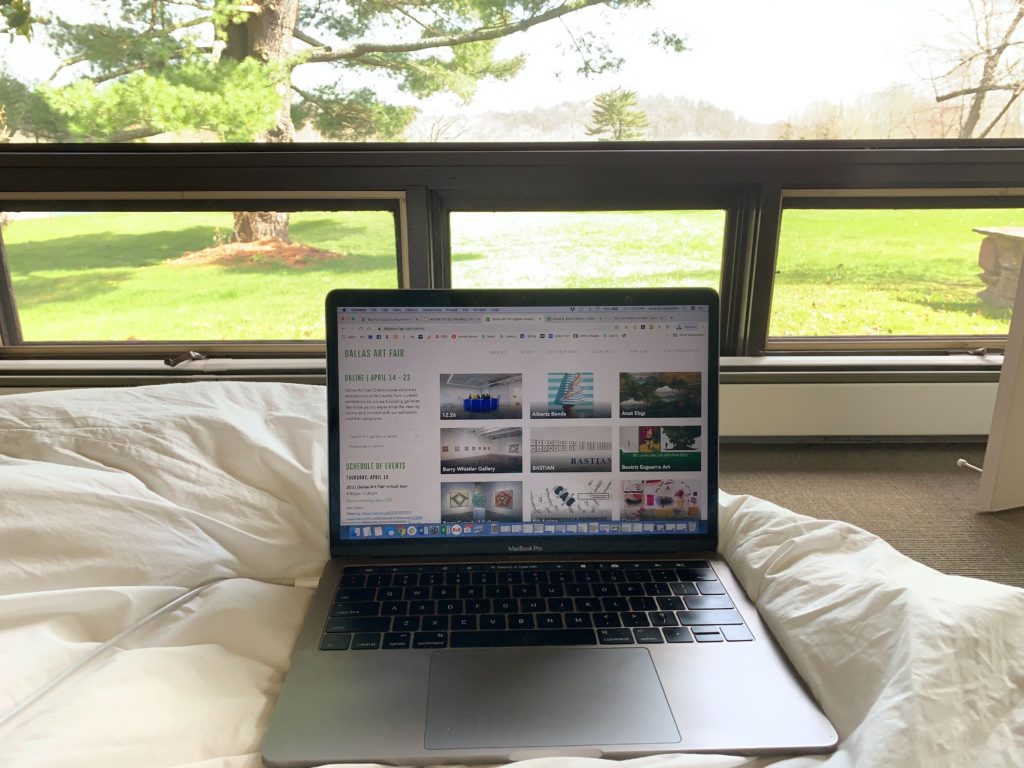
Here are eight of the most memorable works from the Dallas Art Fair's virtual edition.

Andrew Goldstein

Considering that I have never attended the Dallas Art Fair (or been to Dallas), it’s a surreal experience to report on the latest edition of the fair, which, like everything these days, has transmigrated to the virtual realm. It’s also genuinely exciting. As someone who has toiled on the art web for more than a decade and seen company after company champion the dream of an accessible online art marketplace only to treat it, by and large, as a bin for editions and B- or C-grade work, it’s fascinating to see what a digital art fair might look like if people actually took it seriously. And now, of course, for reasons both tragic and terrifying, the whole art market has to take the art-sales-online format seriously. It’s all there is right now.
This means that the Dallas Art Fairs’s online edition (a preface to its rescheduled IRL edition in October) is full of A-grade material, which helpfully allows you to see how the format fares in handling A-grade material. It really makes you aware of the capabilities and limitations of the interface in a way that prints, editions, décor-forward work, and examples by known quantities doesn’t. (The fair calls its online platform “online viewing rooms,” using the format’s laughably banal, misleading, and instantly dated term of choice that brings to mind the immortal quote, “Roads? Where we’re going we don’t need roads!” Why rooms?) It also makes it crystal-clear that an online art fair strips away all pomp and circumstance of the in-person event, coming down to the strength of the fair’s gallery relationships, the quality of its collector mailing list, the compelling nature of its unique brand context, and the ingenuity of its UX developer.
Misanthropes who wish they could initiate a cloaking devise before walking into an art fair so they could bypass the chitchat in the aisles to just look at the art, dammit, will love this new paradigm. One can go through each of the 84 exhibitors’ displays, looking at your leisure (although there is perplexingly no zoom function, and only a relative few dealers provided information on each piece beyond the artist, title, year dimensions, and, with refreshing regularity, price). Miraculously, you might even find yourself watching a piece of video art—something impossible in an actual art fair for anyone lacking zen-like focus. Most astonishing of all, you can see the whole fair, going through every single work in every display, and not be totally zombified. (It’s probably easiest for someone accustomed to staring at screens all day—but, hey, who isn’t?)
Do I wish I could walk around the sculptures on view, lean in for a sideways look at a painting to admire the topography of the impasto? Sure. Do I yearn for a VR headset that would allow me a virtual approximation of doing those things? Eh, not really. Would I like to envision what a work would look like, to scale, on my own wall (a feature the upcoming virtual Frieze Art Fair will offer)? Yes, that would be nice, because otherwise these artworks could be postage stamps for all I know.
All this aside, the big question remains: Can I can get a decent handle on the quality and interest value of these works from navigating through the website?
To find out, I decided to approach the “online viewing rooms” the same way I would a real fair, and try to seek out the most interesting artworks on offer. If I had a question, I would click the “inquire” button and fill out the brief form. And just as I would take into account booth design in a convention center, I’d give extra points for galleries that embraced the essential characteristics of the format—i.e., who made an effort. Because the virtual art-fair architecture used by the Dallas Art Fair is still very much in beta—though in some ways more user-friendly than the more tricked-out Art Basel Hong Kong online fair that kicked off this new period—I would seek out ingenuity and innovation over polish.
Here goes.
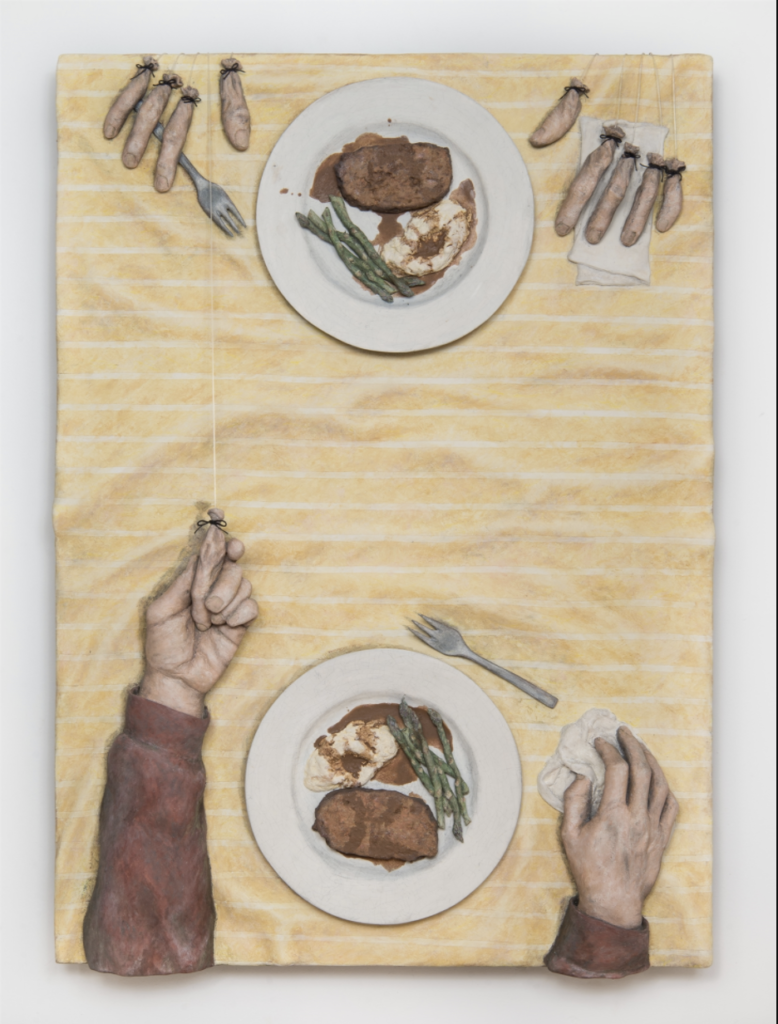
What’s this, a dual-gallery booth? Yes, the collaborative approach that dealers began taking to sustain the onerous costs of doing art fairs has now migrated to the virtual realm, with these two great galleries presenting a solid selection of work, including this wonderfully unsettling piece by the 30-year-old Brooklyn artist Dan Herschlein. A man sits at a table and reaches out to tenderly hold one of the disembodied fingers (either severed or crafted) of his dining companion, which is attached to a piece of sting. The psychological weirdness of the scene would have drawn me in regardless, but then listed materials—which include wood, platter, epoxy, wax, and fishing line—makes it clear it’s actually a sculptural relief, which is more interesting still. A young rising star whose work was shown in the New Museum’s lobby window last year, his drawings can also be found in Matthew Brown Los Angles’s display at the fair, adding to his buzz factor.
 No dealer put as much effort into their presentation as Beatriz Esguerra, who through sheer force of will was able to recreate—and, in some ways, improve upon—the curated fair-booth idiom by hacking the “viewing room” format. Her “show,” called “The Colombian Angle,” features work by Fernando Botero alongside six of his countrymen and women. To bring it alive, she took advantage of the ability to screen videos to offer a 3D virtual walkthrough of a rendering of the real booth, providing a much-appreciated sense of scale and curation. She also included the trailer to a recent Botero documentary, which is worth watching for this quote from scholar Rosalind Krauss alone: “I think Botero’s work is terrible. I think his work is the Pillsbury Doughboy.”
No dealer put as much effort into their presentation as Beatriz Esguerra, who through sheer force of will was able to recreate—and, in some ways, improve upon—the curated fair-booth idiom by hacking the “viewing room” format. Her “show,” called “The Colombian Angle,” features work by Fernando Botero alongside six of his countrymen and women. To bring it alive, she took advantage of the ability to screen videos to offer a 3D virtual walkthrough of a rendering of the real booth, providing a much-appreciated sense of scale and curation. She also included the trailer to a recent Botero documentary, which is worth watching for this quote from scholar Rosalind Krauss alone: “I think Botero’s work is terrible. I think his work is the Pillsbury Doughboy.”

A still from the 3D booth-tour video. Courtesy of the gallery.
But it’s not all terrible, and in fact some of his sculpture has the kind of staying power—not to say gravitas—that history will probably reward, while forgetting his overabundance of chaff. For instance, this zaftig bronze horse is beautifully proportioned and instantly recognizable as a Botero, while at the same time recalling the grand tradition of equestrian sculpture. Fulsome text provided alongside the sculpture (and every work in the presentation) also shares that Botero had a sentimental connection to horses owing to his family history. Mainly, though, it’s an adorable horse. Very expensive? Yes. But this work will make your house very popular.
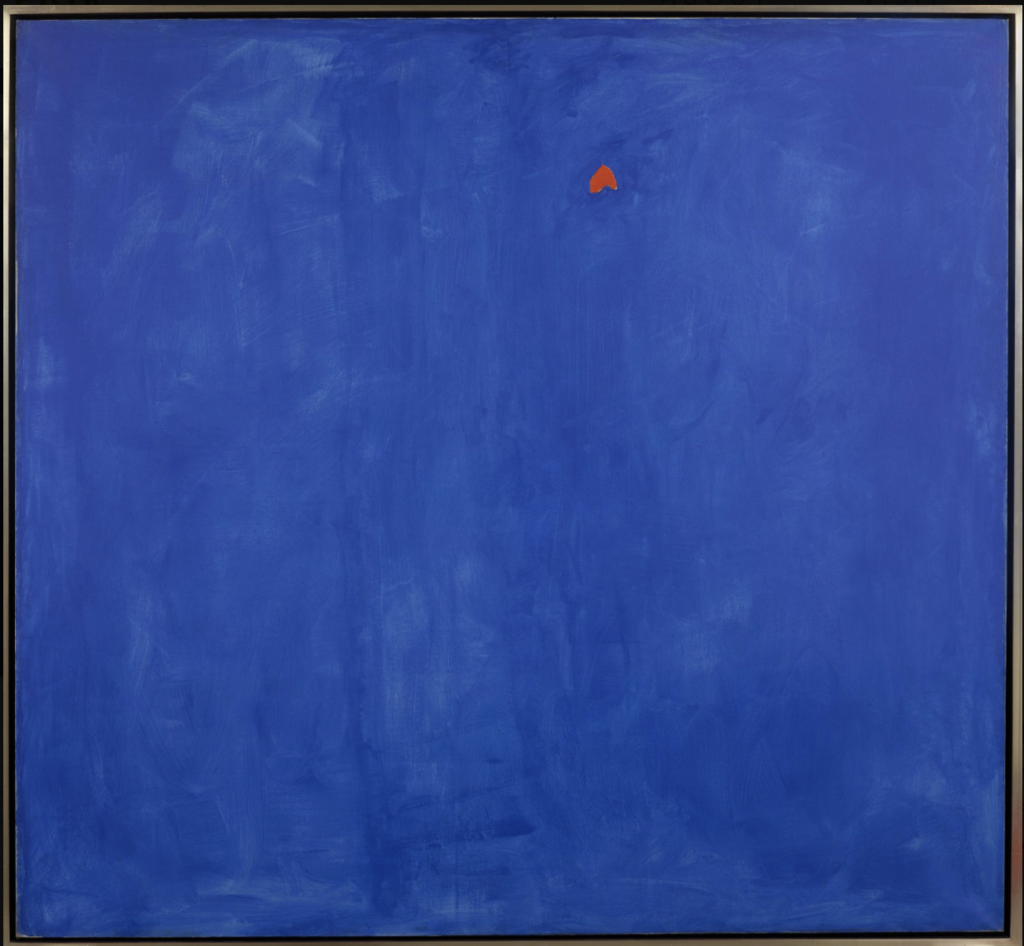
Chelsea dealers Christine Berry and Martha Campbell did not spend quite so much time on the quiddities of the online format, instead relying on old-fashioned connoisseurship, curation, and an eye for sourcing work that looks better over time to put together an excellent display anchored by female artists from the 1950s, ’60s, and ’70s. Some, like Mary Abbott, Perle Fine, Judith Godwin, and Ninth Street Women star Grace Hartigan were undervalued during their lifetime. Others, like Charlotte Park, Sally Michel Avery, and Elaine de Kooning were overshadowed by their artist husbands. One, Betty Parsons, was overshadowed by herself—with her painting career long seen as secondary to her illustrious run as one of New York’s top dealers of Abstract Expressionist art.
This witty painting of a solitary red moth against a brushy blue background plays against the pieties of AbEx orthodoxy, being at once an abstract all-over composition that emphasizes the picture plane and a not-very-abstract-at-all (though Fauvist) portrait of a bug on a wall.

Videos are notoriously hard to take in at an art fair—they’re often long, you typically start somewhere in the middle, and the choice between moving on versus spending an uncertain amount of time for uncertain payoff usually means the former wins. This video, at another collaborative viewing room by Benjamin Tischer/New Discretions gallery and the curator, dealer, and former CAM Houston director Bill Arning, doesn’t have those issues. It’s clearly labeled as being mercifully short (just three minutes long). It is, however, so mercilessly intense that you might feel better considering it in a bit of privacy.
With a title that translates into “154 Slaps,” the work shows the “Spanish polymath” Jana Leo (as the gallery describes her) using her right hand to repeatedly slap the right side of her face with accelerating ferocity, first leaving her cheek red, then purple, and then, by the time she stops at minute 2:35, battered, exhausted, and sad. Created during the artist’s Rome Prize residency, in the early days of the outbreak in Wuhan, China, the video reflects Leo’s focus “on the relationship between the individual and the state,” she writes in an accompanying statement. “Person A is the passive subject, the ordinary citizen, and Person B is a leader/state, one who thinks in realistic and abstract terms…. There is [a] lethal form in which the relationship between the individual and the state is twisted: the lack of care…. One clear example is a mayor or a president who take no action to protect a city or a country…. This video can be used as an illustration of what every one of these politicians should do to themselves after stepping down.” It’s a resonant point, viscerally made.
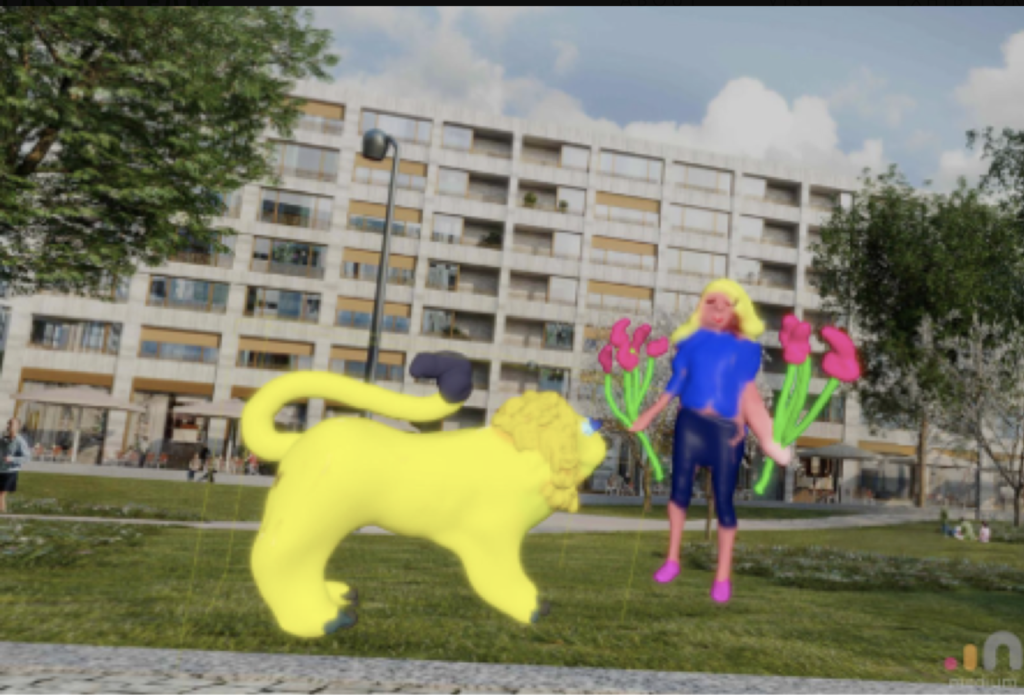
You might not get too far trying to sell a doodle of an as-yet-unmade artwork at a traditional fair—but on the internet, anything goes! Here, the London dealer Carl Kostyál presents a computer drawing of a sculptural pair by the sought-after young New York artist Austin Lee, which is visualized plopped on lawn of some kind of residential complex. A look at the accompanying label reveals that this is a work in progress, to be executed in aluminum and car paint, at a scale a little larger than life-size.
There is a story behind this doodle. The artist favors getting his sculptures fabricated at the Vaghi Foundry in Saronno, Italy, where Kostyál has a home, and the cast aluminum was originally going to be sent to Dallas prior to the in-person edition of the fair, where Lee would paint it and deliver it to a client who had bought an edition through the art advisor Adam Green. Then the lockdown happened, throwing these plans to the wind, and the sculpture remains in Saronno, waiting to be finished after civilization resumes.
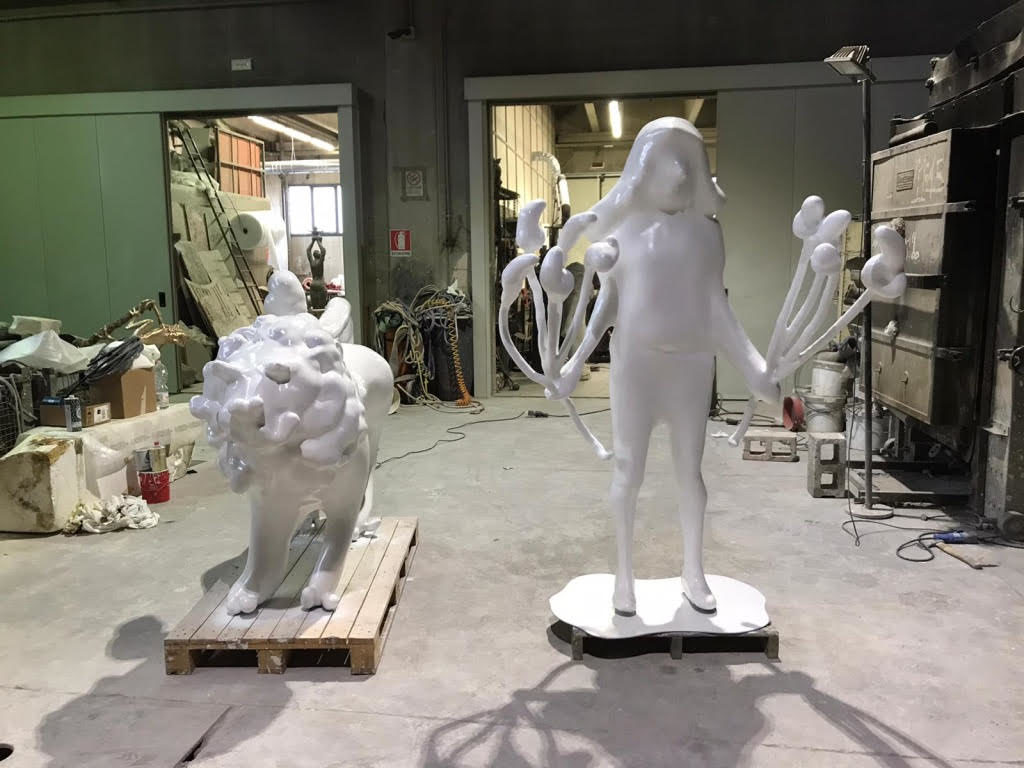
A view of the artwork in progress at the Vaghi Foundry in Saronno, Italy. Courtesy of the gallery.
The tantalizing lesson here is that, in this virtual context, a sketch and a finished artwork are tantamount to pretty much the same thing—though anyone who has bought a Jeff Koons on spec knows: caveat emptor. However, with the right guardrails, something like this could go a long way in reducing risk for a gallery when it comes to fabrication, and shipping costs, allowing art to be sold on-demand.
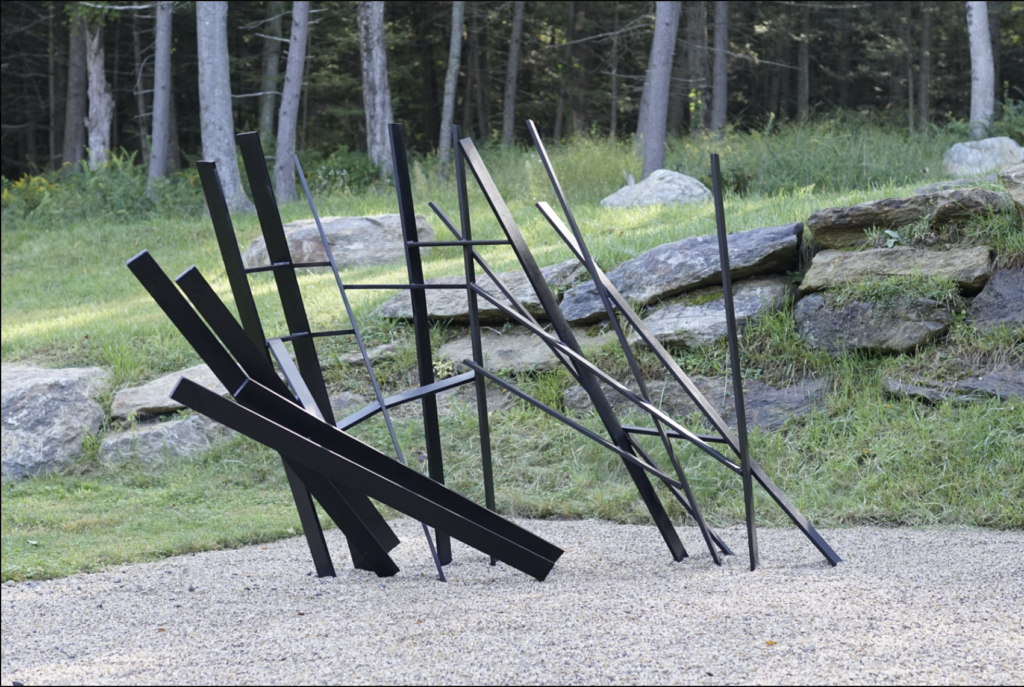
Speaking of outdoor sculptures, the dealer James Barron used his display to present several knockout works by the late artist Beverly Pepper, including this stunner. A work of welded, powder-coated steel that adroitly monumentalizes a state of collapse, it comes from a prime period of the long career of the artist, who was remembered as “one of the most powerful of her generation” when she died at 97 this February.
This is one of six “Web” sculptures that Pepper created in 1977, and two of them are now on permanent display at the artist’s sculpture garden in Todi, Italy, where she spent the second half of her life. Seen on the floor of a convention center, bathed in artificial light, this work might look dated, out of place and time. Seen outdoors, in its natural habitat, as it is in this image, it looks timeless.
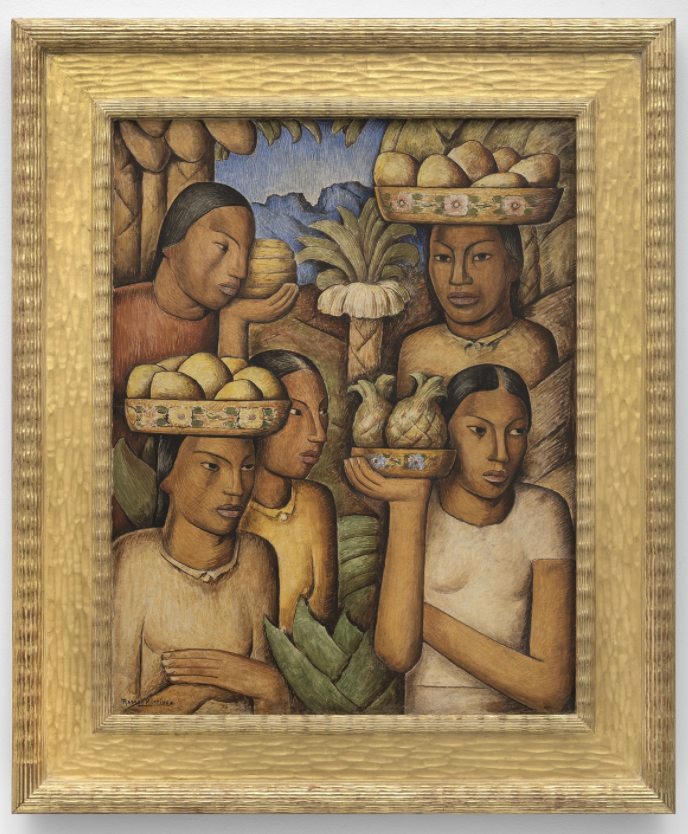
Context is key for an art fair, with an event’s brand overlaying a curatorial framework on a more or less random assortment of artworks. Art Basel is the best, Frieze is intellectual/critical, TEFAF is for connoisseurs, etc. For other fairs with a less established identity, regional geography becomes the selling point, and the Dallas Art Fair’s proximity to the US-Mexico border incentivizes dealers to bring work by Latinx and Latin American artists—something that has bubbled over into the virtual edition.
In that vein, it makes sense that one of the marquee works of the fair would be this group portrait by Alfredo Ramos Martínez. A painter who traveled to Paris in the 1920s and returned to Mexico to spread the gospel of modernism, Martínez was an influential artistic force as the head of Mexico City’s Academy of San Carlos, where he aligned himself with student protestors who wanted to throw out antique pedagogical methods to focus on life and the new. Now sometimes called the father of Mexican modernism, he is best known for his portraits of female fruit- and flower-sellers, who offer up a distinctly Mexican vision of pulchritude, with emphatic lines and rich earth tones.
Martínez is currently getting a wave of new attention, and one of his portraits, of a woman bearing a basket of calla lilies on her back, is the promotional image of the Whitney Museum’s now-shuttered “Vida Americana: Mexican Muralists Remake American Art” exhibition. Showing five rather annoyed-looking women who appear as if they are process of being mansplained, this painting isn’t as joyful as some of his more famous ones—which have sold for up to $4 million at auction—but it’s undeniably masterful, and a piece of art history.